
Critters, Saturn, Lunar Craters
Posted: 21 June 2013
The observatory was opened Thursday, 20 June 2013, at 1841 MST, 101°F. The sky was clear, but there were occasional breezes. Viewed Venus, 83X, at 1847 MST. Then Mercury, 83X. Switched to the 1.25" 5.5mm eyepiece (364X) and began an extended Mercury viewing session. At 1850 MST, it was faint and low contrast against the sunlit sky (about 50 minutes before sunset). However, the crescent phase was clearly visible.
I then had some visitors. First, this quail family:
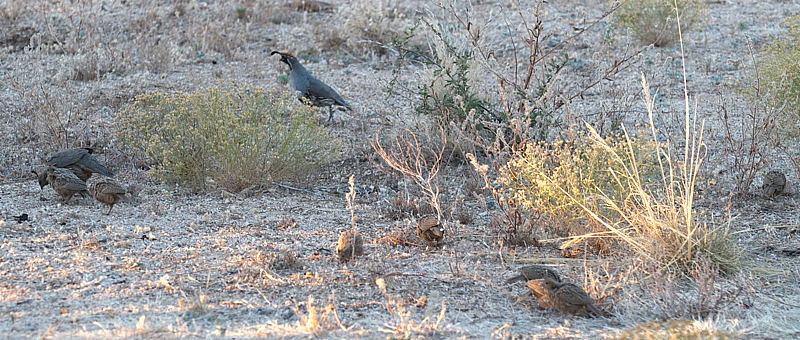
As the quail left, another visitor showed up:
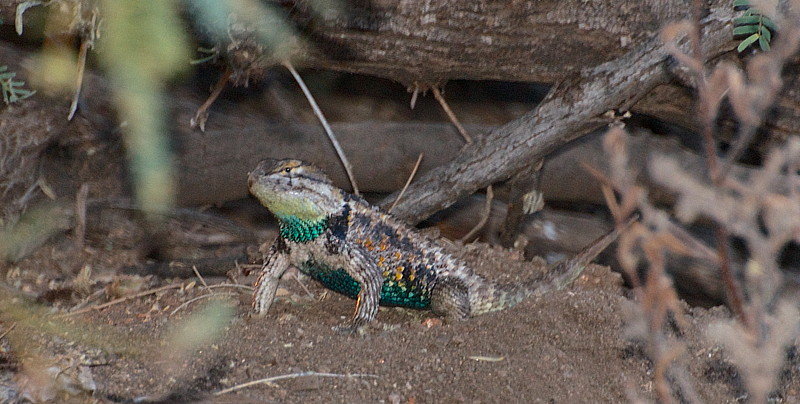
Always nice critters to see here at Cassiopeia Observatory!
Sunset occurred at 1938 MST and the breezes ended. Mercury was becoming visible in the 7x50 finderscope. Venus was in the same finderscope field-of-view (FOV). By 1939 MST, Mercury was too low in the sky for good viewing.
Slewed to Saturn. It was visible in the finderscope. At 364X, the view of Saturn shortly after sunset was pretty good.
At 1944 MST, I slewed the 8" LX200-ACF to the moon and did a quick lunar terminator and limb tour, 364X. There were some good views of lunar details.
I then put the telescope to sleep and closed the observatory temporarily at 1954 MST to avoid prime time for Kissing Bugs.
I returned to the observatory at 2150 MST, and briefly viewed Saturn, 364X. I then began preparing for D7000 DSLR eyepiece projection imaging of Saturn using a 9mm eyepiece (222X). I did a HD video recording, 1/30sec, ISO 5000, for 61 seconds. This is a stack of 1287 frames using Keith's Image Stacker:
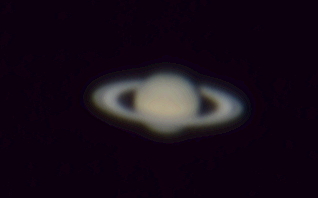
I tried using 9mm + 2X Barlow Lens (444X) on Saturn but the videos were too underexposed to be usable.
I next did some HD videos along the lunar terminator, first with eyepiece projection at 444X (too underexposed) and then at 222X. Seeing was not very good now. These images are single frames from the 222X video recordings, 1/125sec, ISO 3200:
Lunar South Pole
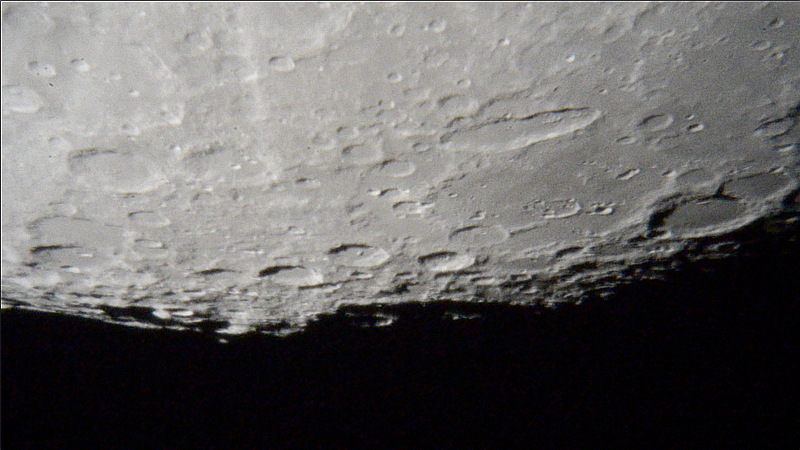
Crater Schickard
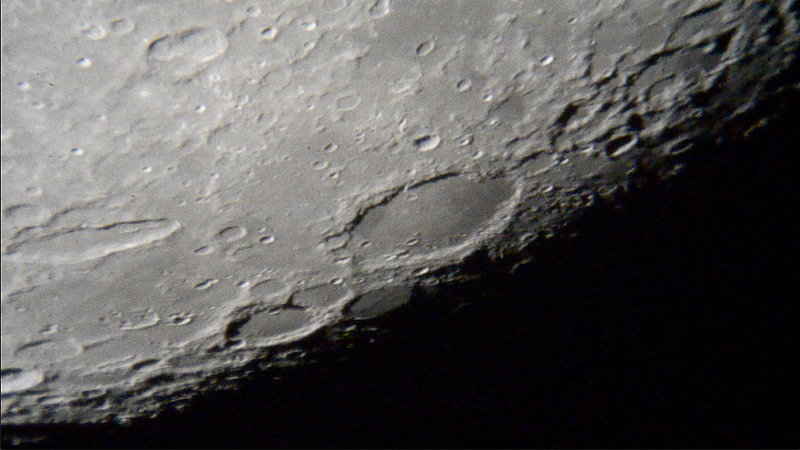
Crater Aristarchus and Vallis Schröten
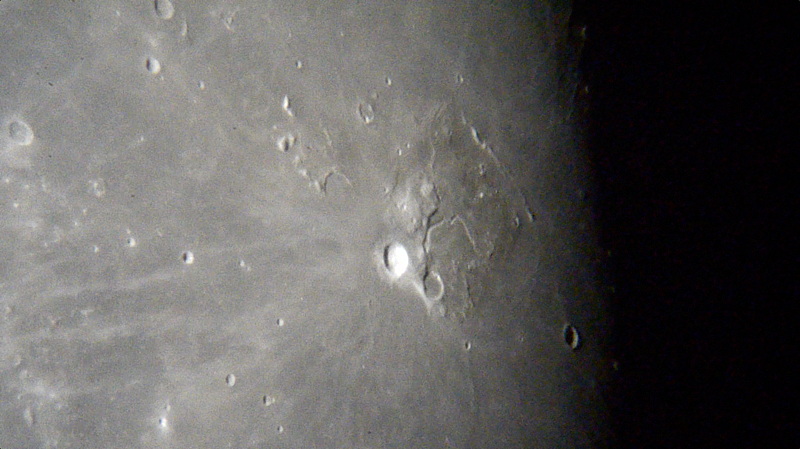
I completed imaging at 2237 MST, and did a visual tour of the lunar terminator using 364X. I added the 2X Barlow Lens (for a magnification of 727X, which exceeds the theoretical maximum magnification of 400X for an 8" telescope). There were brief moments with great views along the terminator.
At 2249 MST, I took a final look at the bright waxing gibbous moon using the 2" 24mm UWA eyepiece (83X). The moon nearly filled the entire FOV.
The observatory was closed at 2300 MST, 76°F.
Comments are welcome; use the Comments section below, or you can Email Me. Thanks.
Cassiopeia Observatory Home Page